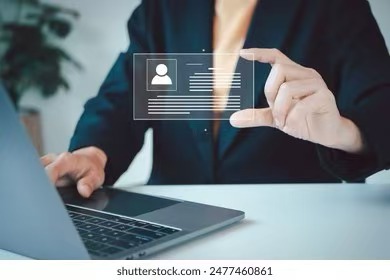Imagine, when you are carefully choosing a WeChat avatar, whether you choose a professional professional photo or a landscape photo you took before, when you conceive an Instagram profile, will you emphasize whether you like to think or exercise? These daily behaviours are the starting point of digital identity construction. Our online self is no longer a single, fixed entity, but a diverse, editable and continuous project. Our online self-presentation does not arise out of thin air. Sociologist Erving Goffman (1959) has long pointed out that social life is like a stage, and we are always performing at the “front desk”. And cyberspace, as revealed by scholar Sherry Turkle (1995), has become the ultimate “identity laboratory”, allowing us to try different “front” selves more freely. This blog will discuss how we build digital identities and what it means to our true self.

How Do We Craft the Digital Self?
· Self-selection planning: We manage impressions through avatars, personal profiles and selective sharing of highlights.
· Depends on personal interests: the content we like, share and comment on defines our taste and values. On this basis, the algorithm has further strengthened our identity label.
· The power of using virtual technology: In games and metaverses, virtual technology enables us to transcend physical limitations and try different genders, races, appearances and abilities, providing infinite possibilities for the realisation of the “ideal self”.
The Positive Impacts: Empowerment, Exploration, and Community
Digital identity construction can liberate some repressed selves. For LGBTQ+ groups, people with disabilities or people with niche hobbies, the Internet can be a safe space to release themselves, allowing them to explore and express themselves that may be suppressed in the real world. At the same time, it can also help people find a sense of belonging and build a strong support network. As danah boyd (2014) pointed out in his study, social media enables teenagers to connect with their peers in a controlled environment, explore identity and build a sense of belonging, which is crucial for their growth.
The Challenges: Authenticity, Anxiety, and Control
· When family, friends and colleagues all appear on the same social platform, we have to perform for a mixed audience, which makes us more cautious when publishing content, and finally presents a generalised and bland version of ourselves.
· Maintaining the pressure of a perfect personality will lead to continuous anxiety. Are we acting for the praise, or are we being our true ses?
· Our identity is not only built by ourselves, but also shaped by platforms and algorithms. They create a “data incarnation” by collecting our data, which in turn affects our vision and cognition through “filtering bubbles”. ( Shoshana Zuboff, 2019)
Conclusion
In a word, digital identity is not a lie, but a complex puzzle. It can not only fully show its personality, but also be subject to external technology and commercial power. The digital world tells us that there may be no unique and fixed “true self”. The real challenge is that we should consciously examine the relationship between our many identities and answer the eternal question of “who am I” more wisely in the intertwining of virtual and reality.
Reference:
· Danah Boyd (2014). It’s complicated: The social lives of networked teens. Yale University Press.
· Erving Goffman (1959). The presentation of self in everyday life. Anchor Books.
· Lisa Nakamura (2008). Digitizing race: Visual cultures of the internet. University of Minnesota Press.
· Sherry Turkle (1995). Life on the screen: Identity in the age of the internet. Simon & Schuster.
· Shoshana Zuboff (2019). The age of surveillance capitalism: The fight for a human future at the new frontier of power. PublicAffairs.

